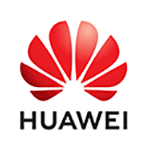Cultivating your InnerSource marketplace
Establishing an InnerSource program inherently implies creating a supply-and-demand scenario. Failing to satisfy the needs of this marketplace can fundamentally limit your program’s effectiveness. Using Fidelity’s InnerSource journey as a case study, Stephen McCall and Shreyans Dugar explore the benefits of creating systems of discoverability that allow project owners to easily connect with potential contributors.
Over the past year, the InnerSource program at Fidelity has progressed in fits and starts. It began with a burst of excitement and enthusiasm but slowed to a slow crawl in the intervening months, as individual project owners encountered the difficulties of attracting a community of contributors. What was going wrong?
Initially the culprit was thought to be middle management. The working hypothesis was that they were starving the entire program of the resources it needed to survive by not allowing their employees the time needed to participate in InnerSource projects. However, deeper investigation of those managers showed that most were supportive and some were even excited to allow their employees the opportunities to explore areas outside of their current project work. Probing a bit deeper with both the project owners and potential contributors yielded a deeper insight. There simply was no single, uniform way for them to find one another.
To address this need several separate initiatives were spawned across business units and then brought together by the InnerSource governance team to create an intranet-based InnerSource marketplace. The first was an InnerSource project portal where project owners could plug in a URL to their Git repo and (via the inclusion of an “innersource.json” file to their codebase) display small cards of information describing their projects. Each of these were then indexed and made searchable by end users based on a number of criteria, including business unit name, technologies in use, and trusted contributor names. The second was Thrive, a gig-based intranet site where individuals could advertise their areas of expertise and project owners could list opportunities for collaboration describing exactly the skill and time requirements needed. To reward participants, a points system was attached to every action, in which points accrued by accepting a gig are captured and used as performance management criteria. All interactions are tracked via a public dashboard to measure and communicate the overall health of the marketplace. In combination, these systems of discoverability have vastly increased the number of possibilities for InnerSource opportunities. The self-directed nature of these tools has enhanced the employee experience while also providing a constant source of tasks for employees to pivot to in the event they are underutilized by their current teams.

Stephen McCall
Fidelity Investments
Stephen McCall is an InnerSource governance architect within the Enterprise Cloud Computing Group at Fidelity Investments, where he collaborates with individuals and teams across all Fidelity business units to enable and speed the adoption of open source and InnerSource best practices. A curious and persistent technologist, a design ops innovator, an InnerSource evangelist, and a design thinking advocate, Stephen has over 20 years of experience driving cultural change within organizations both large and small. He is focused on removing as many of the layers of translation between product ideation and implementation as possible by creating streamlined systems of interaction across disciplines.

Shreyans Dugar
Fidelity Investments
Shreyans Dugar is data center services lead within the Enterprise Technology Group at Fidelity Investments, India, and the program lead for the gig marketplace that allows managers to post short-term assignments and individuals to sign up and deliver these assignments. In this capacity, Shreyans collaborates with teams across business units to scale this program across the enterprise. Moreover, maturing the marketplace is about changing behaviors within the organization, and Shreyans is leading this effort to leverage the internal gig economy.
Sponsorship Opportunities
For exhibition and sponsorship opportunities, email oscon@oreilly.com
Partner Opportunities
For information on trade opportunities with O'Reilly conferences, email partners@oreilly.com
Contact Us
View a complete list of OSCON contacts
©2018, O'Reilly Media, Inc. • (800) 889-8969 or (707) 827-7019 • Monday-Friday 7:30am-5pm PT • All trademarks and registered trademarks appearing on oreilly.com are the property of their respective owners. • confreg@oreilly.com




























